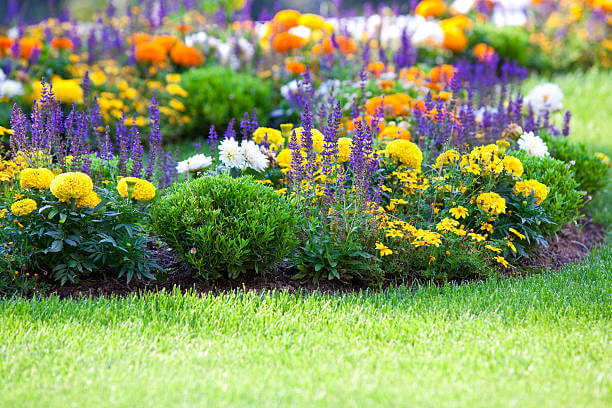
How To Arrange Plants In A Flower Bed
Share
Arranging plants in a flower bed can be a creative and enjoyable task
This task allows you to design a beautiful and harmonious outdoor space.
Whether you're a beginner or an experienced gardener, considering various factors such as color, height, bloom time, texture, and growth habits can help you create an appealing and well-organized flower bed.
In this guide, we'll explore arranging plants in a flower bed in detail, providing practical tips and ideas to create a stunning garden display.
Plan and Design: Before starting to arrange plants in your flower bed, it's essential to have a plan and design in mind. Consider the following aspects:
Purpose: Determine the purpose of the flower bed. Are you aiming for a colorful display, a specific theme, or attracting pollinators?
Sunlight: Observe the sunlight conditions in your garden to choose plants accordingly. Soil and Drainage: Assess the soil type and drainage in your garden. Plants have different soil requirements, and proper drainage is crucial for their health.
Plant Selection: Research and select plants suitable for your climate, the available space, and personal preferences.
Grouping Plants: Grouping plants based on their characteristics and requirements helps create a cohesive and visually appealing flower bed.
Consider the following grouping options:
Color: Select a color scheme for your flower bed. You can opt for a monochromatic scheme (varying shades of a single color), complementary colors (opposite colors on the color wheel), or harmonious colors (adjacent colors on the color wheel).
Height: Arrange plants based on size to create a visually pleasing arrangement. Taller plants can be placed in the background or center, while shorter plants can be placed in the foreground.
Bloom Time: Combine plants that bloom at different times to ensure a display of flowers throughout the growing season.
Texture: Mix plants with different foliage textures to add visual interest. Combine plants with smooth, coarse, feathery, or lacy leaves to create a diverse and dynamic flower bed.
Growth Habit: Consider the growth habit of plants, such as spreading, clumping, or cascading. Place spreading plants where they have space to grow, clumping plants together for impact, and cascading plants near the edges of the flower bed or containers.
Planting Techniques: Once you have determined the arrangement and grouping of plants, follow these planting techniques for a successful flower bed:
Prepare the Soil: Ensure the soil is well-prepared before planting. Remove weeds, rocks, and debris, and amend the soil with organic matter if necessary.
Dig Proper Holes: Dig holes wide and deep enough to accommodate the plant's root ball. Spacing: Consider the mature size of the plants and provide adequate spacing between them. It allows each plant to receive sufficient nutrients, sunlight, and airflow.
Watering and Mulching: After planting, water the flower bed thoroughly and apply a layer of organic mulch around the plants. Mulch helps retain moisture, suppress weeds, and regulate soil temperature.
Maintenance: Regularly water, fertilize, and deadhead spent flowers to promote healthy growth and prolonged blooming.
Consider Companion Planting:
Companion planting involves selecting plant combinations that benefit each other by enhancing growth, repelling pests, or attracting pollinators.
Some famous examples include:
Marigolds and tomatoes: Marigolds repel pests that commonly affect tomatoes.
Lavender and roses: Lavender attracts pollinators, such as bees, which benefit from rose pollination.
Nasturtiums and vegetables: Nasturtiums repel pests and attract beneficial insects for vegetables like cucumbers and squash.
Adapt and Evolve: Remember that gardening is dynamic, and your flower bed will evolve. Monitor the growth of your plants, make adjustments if needed, and enjoy the opportunity to experiment with new combinations or additions to enhance the beauty of your flower bed.
In conclusion, arranging plants in a flower bed involves:
Careful planning. Grouping plants based on various characteristics. Implementing proper planting techniques. Considering companion planting. Allowing for adaptability and growth.
By following these guidelines and unleashing your creativity, you can create a stunning and harmonious flower bed that brings joy and beauty to your outdoor space. -- Tn Nursery https://www.tnnursery.net
